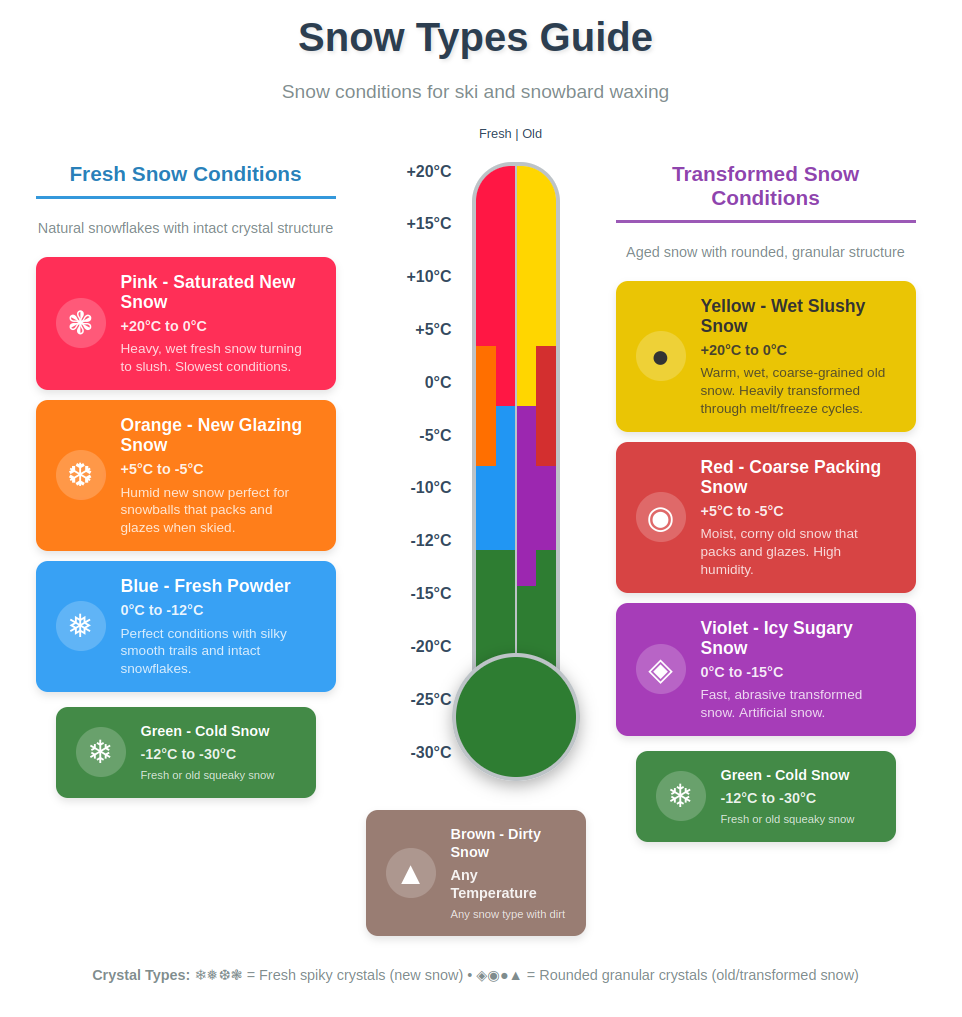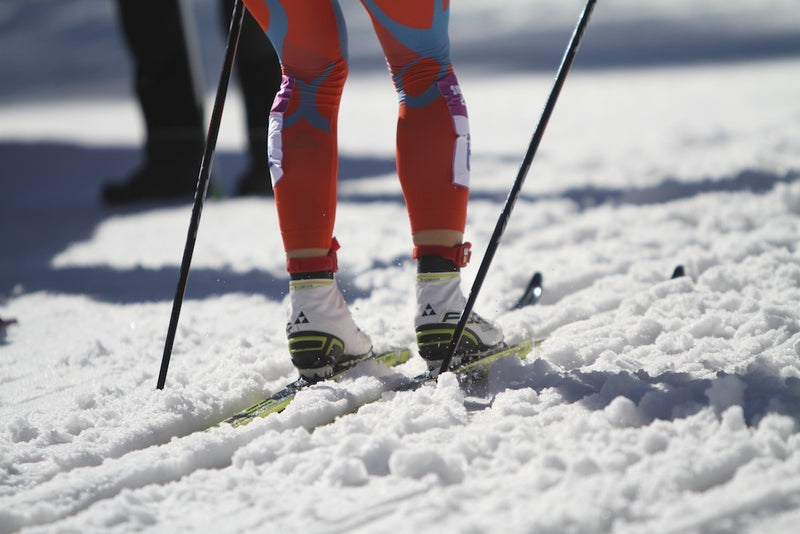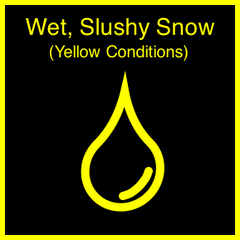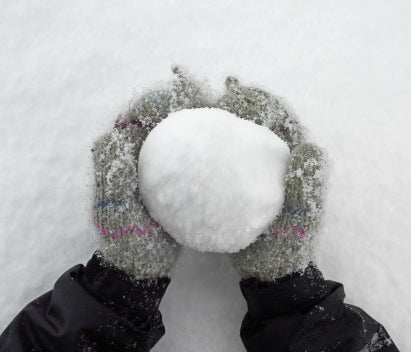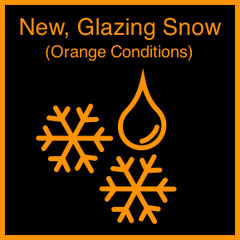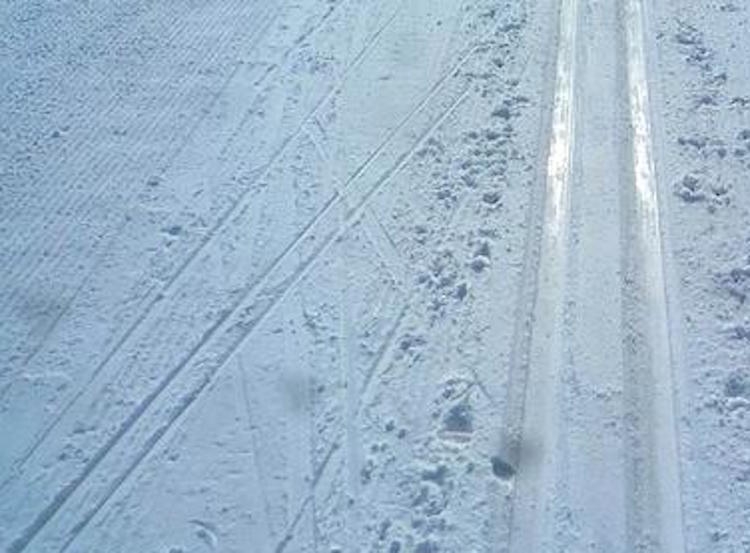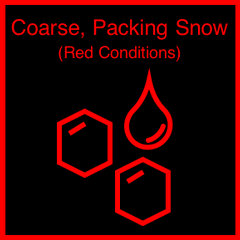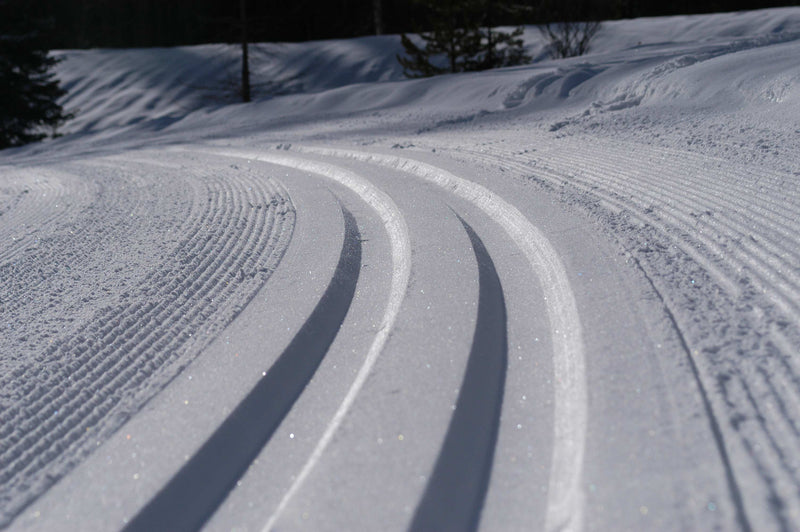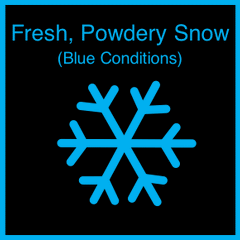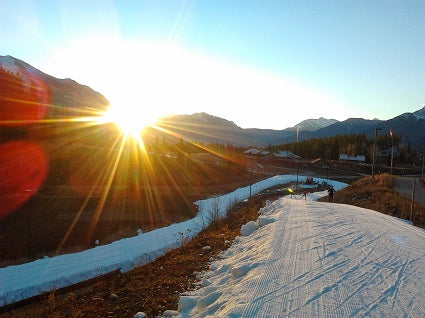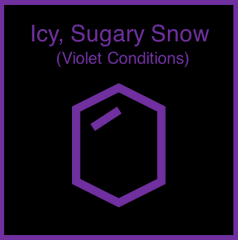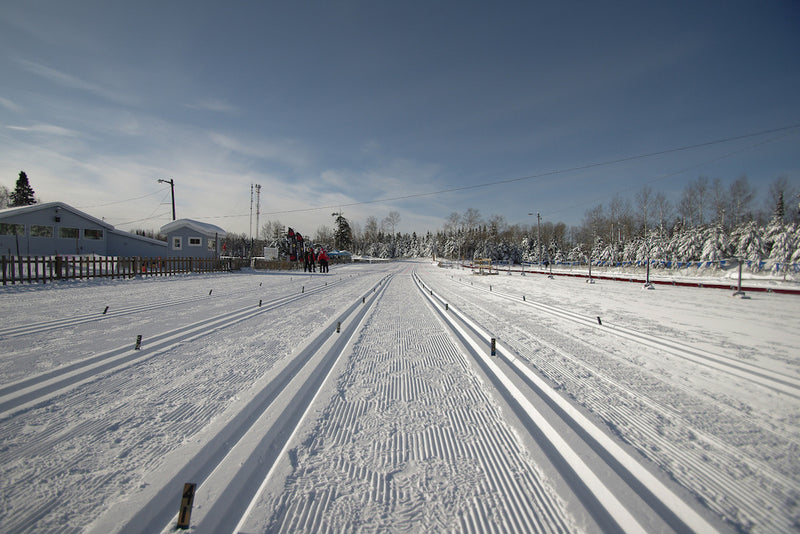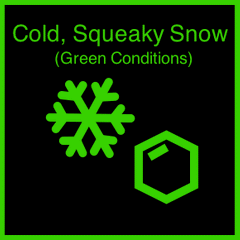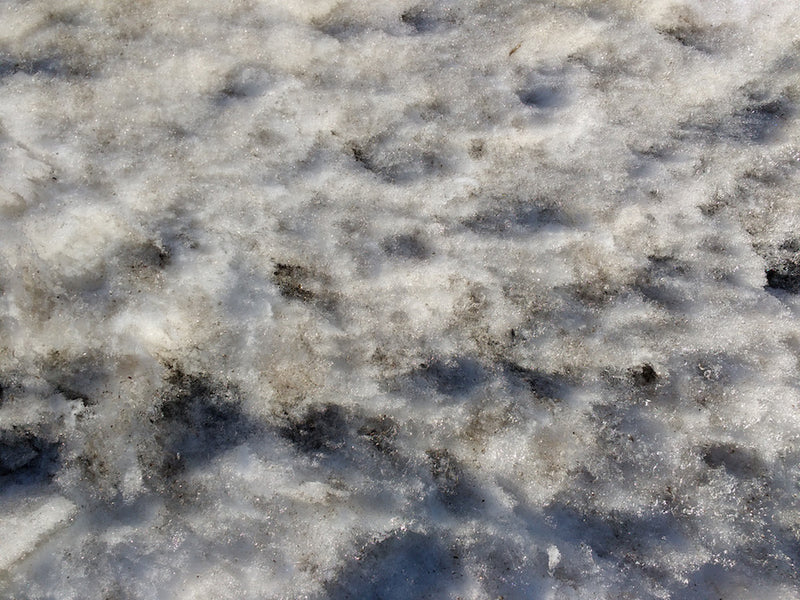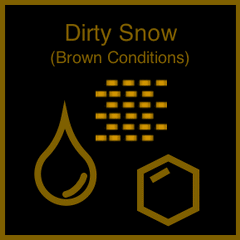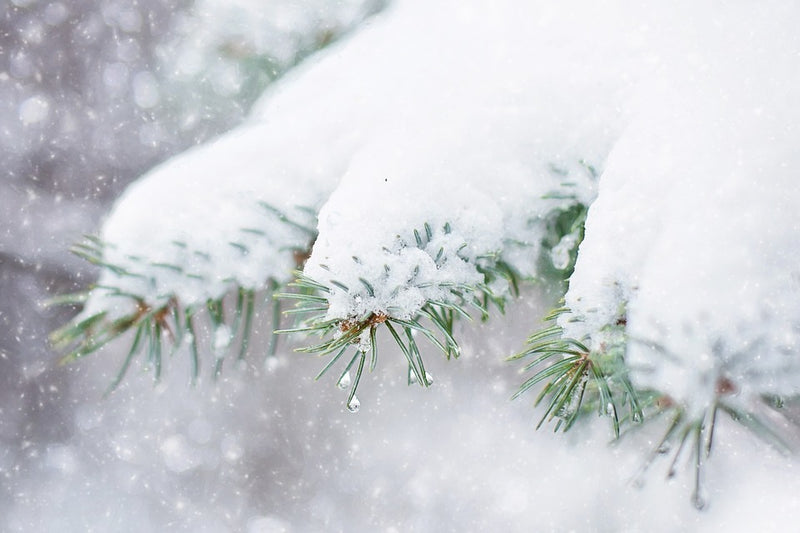
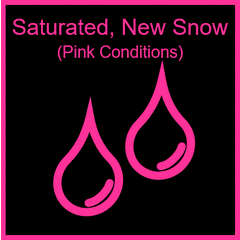
Pink Snow Conditions (Saturated, New Snow, +20°C to 0°C)
Pink conditions occur when fresh snow becomes thoroughly saturated with water. This happens at temperatures at and well above zero Celsius or in rare circumstances when the ground radiates heat up through the snowpack. The fresh snow is melting, turning into slush and hanging on to almost all its moisture as it melts. The snow is weighty, and sticks to tree branches as it falls. Pink conditions are the slowest conditions. It takes a lot of energy to force a ski through the high levels of suction friction.

